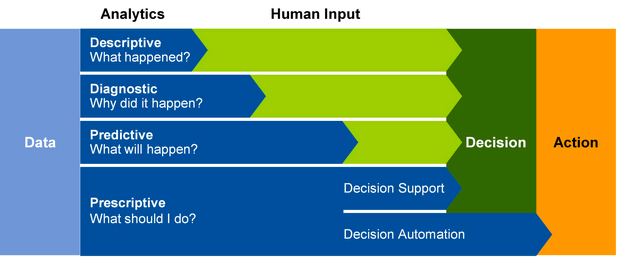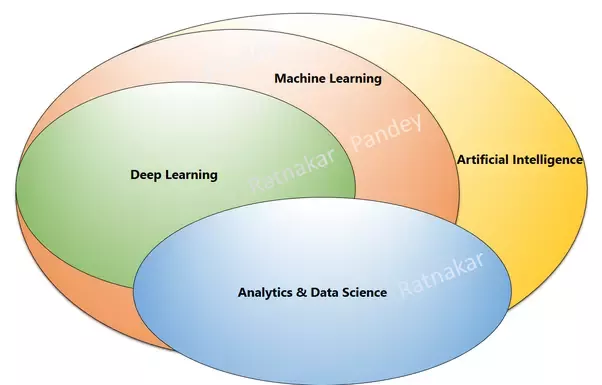Artificial intelligence is the future. Artificial intelligence is science fiction. Artificial intelligence is already part of our everyday lives. All those statements are true, it just depends on what flavor of AI you are referring to.
Most of us are familiar with the term “Artificial Intelligence.” After all, it’s been a popular focus in movies such as The Terminator, The Matrix, and Ex Machina but you may have recently been hearing about other terms like “Machine Learning” and “Deep Learning,” sometimes used interchangeably with artificial intelligence. As a result, the difference between artificial intelligence, machine learning, and deep learning can be very unclear.
I’ll begin by giving a quick explanation of what Artificial Intelligence (AI), Machine Learning (ML), and Deep Learning (DL) actually mean and how they’re different this week (over a many part series) and explain some of their applications and current best practices, paradigms and uses.
What is AI (Artificial Intelligence)?
Artificial Intelligence is the expansive umbrella term portraying computer systems endeavoring to impersonate human-like insight. John McCarthy, widely recognized as one of the godfathers of AI, defined it as “the science and engineering of making intelligent machines.”
Here are a few other definitions of artificial intelligence:
A branch of computer science dealing with the simulation of intelligent behavior in #computers.
The capability of a machine to imitate intelligent human behavior.
A computer system able to perform tasks that normally require human intelligence, such as visual perception, speech recognition, decision-making, and translation between languages.
Today, the areas most prevalent with AI innovation are Robotics, Manufacturing, FinTech, Machine Vision (i.e. pattern recognition) and Natural Language Processing (or text analysis). The key advantage of AI in business are largely based (currently) on Predictive Analytics and Systems, however we will soon be moving toward a Prescriptive paradigm where the models (or machines) help us actually figure out what to do and when to do it (i.e. prescribe a particular action). Using AI algorithms, organizations can develop models and/or programs that retrain themselves at an ever increasing pace (i.e. exponentially) to increase their own inherent value as well as that of the organization.

Artificial Intelligence, General Intelligence and Super Intelligence
General AI machines have stayed in the movies and sci-fi books in light of current circumstances; we can’t pull it off, at any rate not yet. There is indeed a difference between the three classes of intelligence and there are some examples of each in popular culture.
Artificial Intelligence (AI)
Artificial General Intelligence (AGI)

Artificial Superintelligence (ASI)
But what about Terminator (i.e. the T3000? The robot created by Skynet in 2029 that comes back to rid humanity of John Connor (and who just won’t die). This type of robot would belong to a field of AI is called Artificial Superintelligence, and it is also the field of research that Stephen Hawking has warned us about. One of AI’s leading figures, Nick Bostrom has defined superintelligence as:
This slight or vast superiority to human intellect is disconcerting to scientists and laymen because its outcome is unknown. A machine capable of constantly learning and improving itself could be unstoppable.

Artificial Intelligence vs Human Intelligence
There are a lot of ways to simulate human intelligence, and some methods are more intelligent than others.
For example, when Google DeepMind’s AlphaGo program defeated South Korean Master Lee Se-dol in the board game Go a few years go, the terms AI, machine learning, and deep learning were used in the media to describe how DeepMind won. And all three are part of the reason why AlphaGo trounced Lee Se-Dol. But they are not the same things.
The easiest way to think of their relationship is to visualize them as concentric circles with AI — the idea that came first — the largest, then machine learning — which blossomed later, and finally deep learning — which is driving today’s AI explosion — fitting inside both.

AI can be a pile of if-then statements, or a complex statistical model mapping raw sensory data to symbolic categories. The if-then statements are simply rules explicitly programmed by a human hand. Taken together, these if-then statements are sometimes called rules engines, expert systems, knowledge graphs or symbolic AI.
Collectively, these are known as Good, Old-Fashioned AI (AI). The intelligence they mimic could be that of an accountant with knowledge of the tax code, who takes information you feed it, runs the information through a set of static rules, and gives your the amount of taxes you owe as a result.
Usually, when a computer program designed by AI researchers actually succeeds at something – like winning at chess – many people say it’s “not really intelligent”, because the algorithm’s internals are well understood. A wag would say that true AI is whatever computers can’t do yet.
In the next post, I'll discuss what Machine Learning is and how it relates to AI.
So what do you do when all signs point to having to go to University to gain any sort of advantage? Unfortunately it’s the current state of affairs that most employers will not hire you unless you have a degree for even junior or starting jobs. Once you have that degree, coming to my Mentor Program, with 1000ml with our Patent Pending training system, the only such system in the world; is the only way to gain the practical knowledge and experience that will jump start your career.
Check out our next dates below for our upcoming seminars, labs and programs, we’d love to have you there.
